The battle for the badlands of Yemen
In harsh desert terrain on the outskirts of Marib, the internationally recognised government, backed by a Saudi-led military coalition, is fighting Iran-backed Houthi rebels, writes Siobhan O’Grady and Ali Al-Mujahed
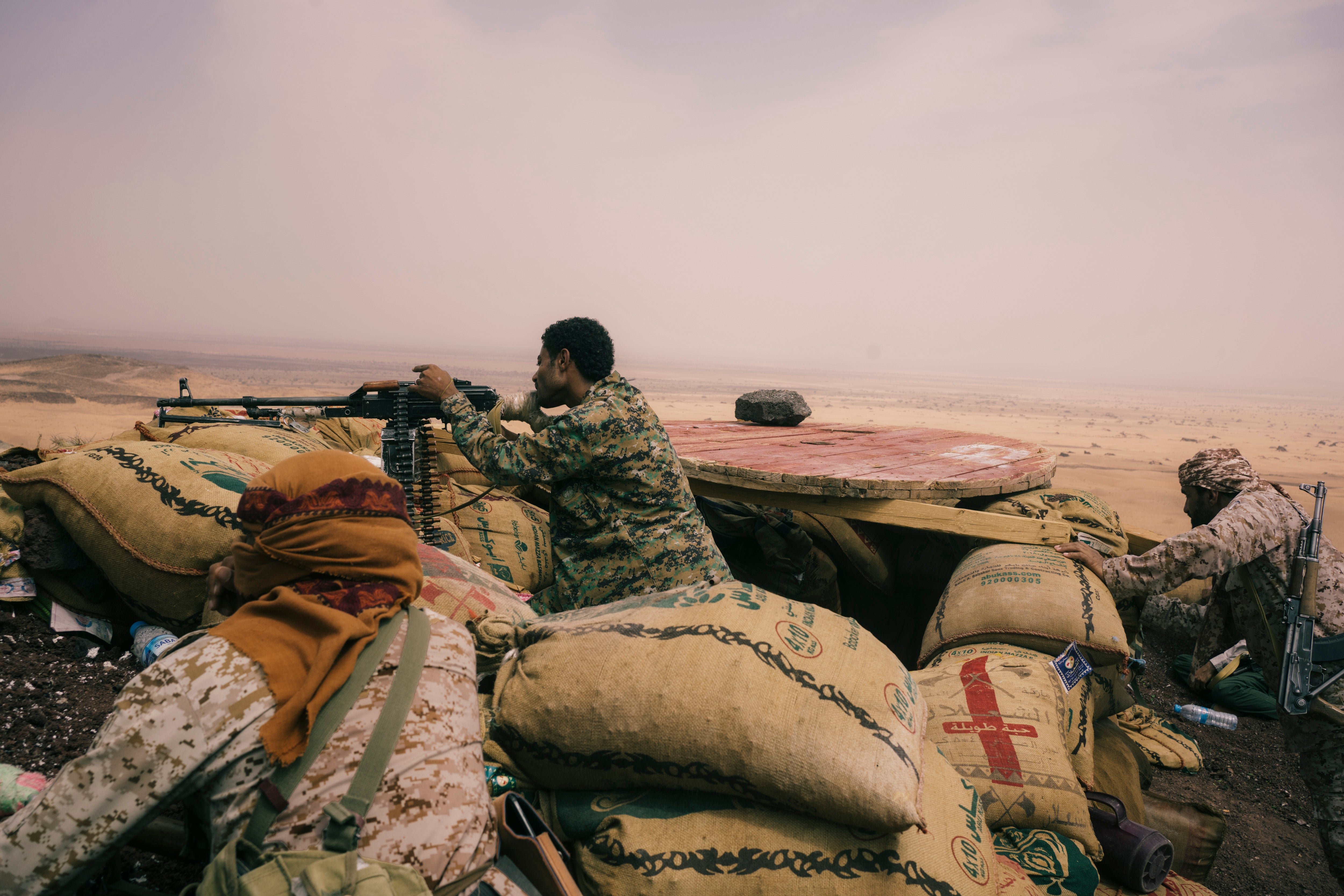
The young men pour into the hospital straight from the front lines, their limbs broken or missing, their skin burned by missiles and drones, bullet wounds in their heads and necks. Their relatives follow, keeping vigil next to their cots or producing permission slips to carry those who have succumbed to the cemetery across town, where row after row of identical headstones now stretch out in the sand.
This grim flood has been relentless over recent months because of the unceasing determination of the two main sides in Yemen’s civil war to win what could be the pivotal battle of the seven-year conflict.
In harsh desert terrain on the outskirts of Marib, Iran-backed Houthi rebels are fighting the internationally recognised government, backed by a Saudi-led military coalition, for control of its strategic stronghold in the country’s north.
If the Houthis were to seize control of the province, also called Marib, this would award the group near-total control of northern Yemen, access to key oil and gas infrastructure and an upper hand in talks aimed at ending the conflict. For government forces, this would mark an enormous setback.
More than a million civilians fleeing fighting elsewhere have streamed into Marib province in recent years and many could now be displaced again as the battle inches closer. Some, including children, have already been killed and wounded by missile attacks and shelling.
This year, the Houthis rejected a ceasefire offer from Saudi Arabia that could have ended this bloodletting, saying they will agree to discuss a truce only once the airport in the capital, Sanaa, is reopened and all restrictions are lifted from the port of Hodeida. The Saudi-led coalition continues to control the country’s airspace and the port, a crucial lifeline for the country, which is submerged in what the United Nations has described as the world’s worst humanitarian crisis.
At least 1,700 government troops in Marib province have been killed and about 7,000 wounded so far this year in such attacks
The Houthis have instead pressed their campaign to wrest control of Marib province. To hold the Houthis back, government troops and allied local forces have dug trenches into hillsides and positioned themselves atop the peaks that dot the arid landscape, using the high ground to fire across the sandy expanse.
They are bolstered by frequent Saudi airstrikes against Houthi positions nearby. But the government forces are themselves vulnerable to Houthi missile and drone strikes.
“Facing the ballistic missiles and drones, this is the biggest problem,” says Lt Gen Sagheer bin Aziz, chief of staff of the Yemeni army, speaking near the front line west of Marib city. The interview is briefly interrupted when a Houthi drone is spotted overhead, forcing soldiers and us journalists to scramble to a safer location.
The Houthis have stepped up those missile and drone attacks in response to Saudi airstrikes, according to Dhaifallah al-Shami, minister of information in Houthi-controlled Sanaa, saying that “it’s one eye for another”.
At least 1,700 government troops in Marib province have been killed and about 7,000 wounded so far this year in such attacks as well as by persistent sniper fire and other hostilities, bin Aziz says. The Houthis, who do not release official death counts, are also believed to be sustaining serious casualties, largely due to the Saudi airstrikes.
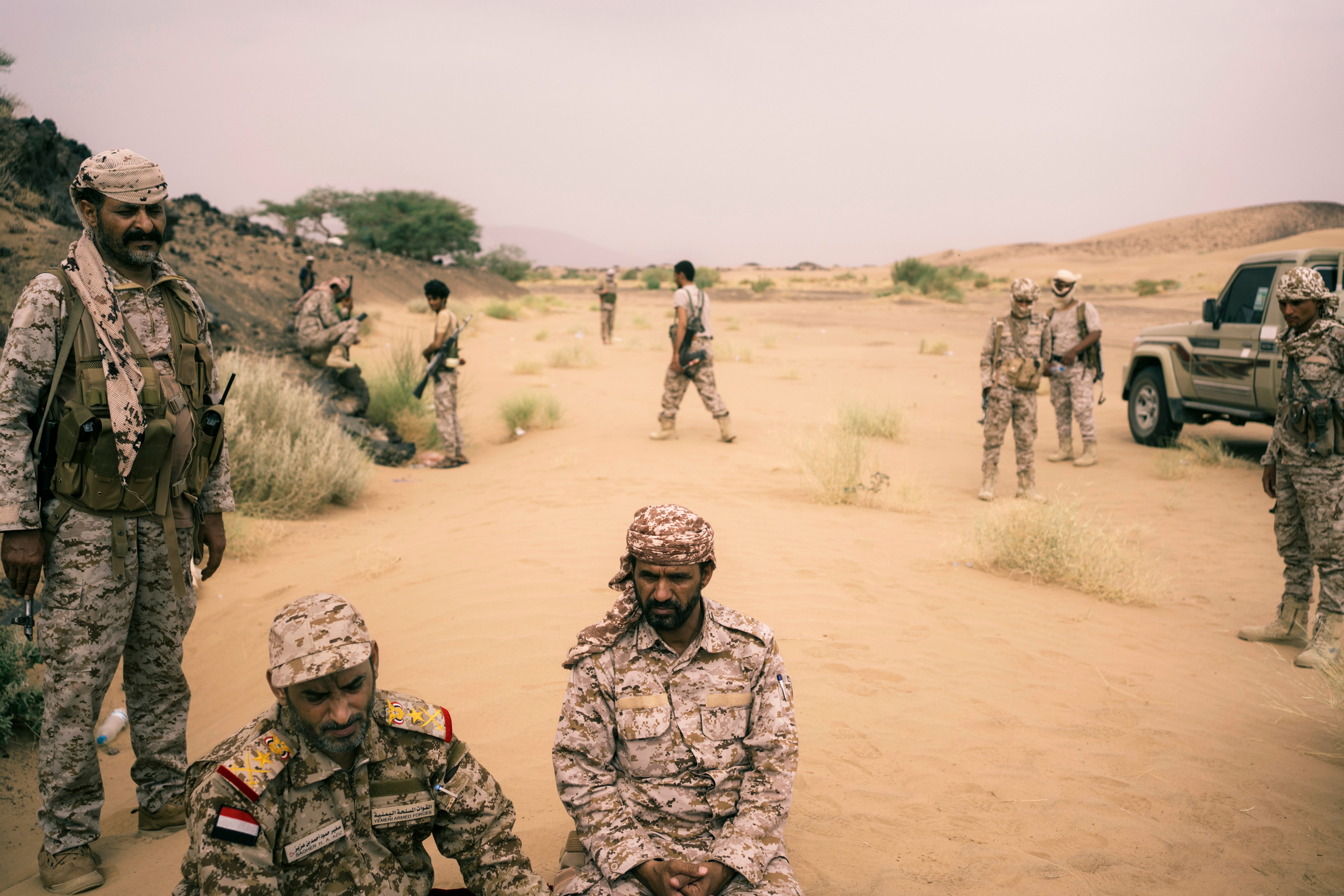
Ammar Abu Saleh, 29, lost his left leg in a landmine explosion in 2018 while fighting on the front lines with government forces, he says, and then had it amputated after he was taken hostage by the Houthis. Eventually, he was released in a prisoner exchange, fitted for a prosthetic and sent back to the front line.
But late last year, he came under fire and had to leave his new leg behind.
Since then, he has continued to fight anyway, operating a machine gun in the mountains outside of Marib. “It’s easier with the leg,” he says but the disadvantage is not enough to keep him home. He says: “I feel I was made to fight.”
On a recent day, Abu Saleh briefly left his position on the front line to travel into town and join the growing line of people waiting for new legs at the general hospital.
There, the miseries of the war are on full display. Outside, young men missing legs lean on crutches or practise walking laps with new prosthetics provided through a Saudi-funded rehabilitation centre, where the waiting list for new limbs has soared in the past year.
Inside, hospital staff describe a relentless cycle of traumatic cases that have left them exhausted. “There is rising pressure day by day,” says Mohammed Abdo al-Qubati, head of the hospital authority. The facility now treats few civilians, given a constant influx of wounded soldiers.
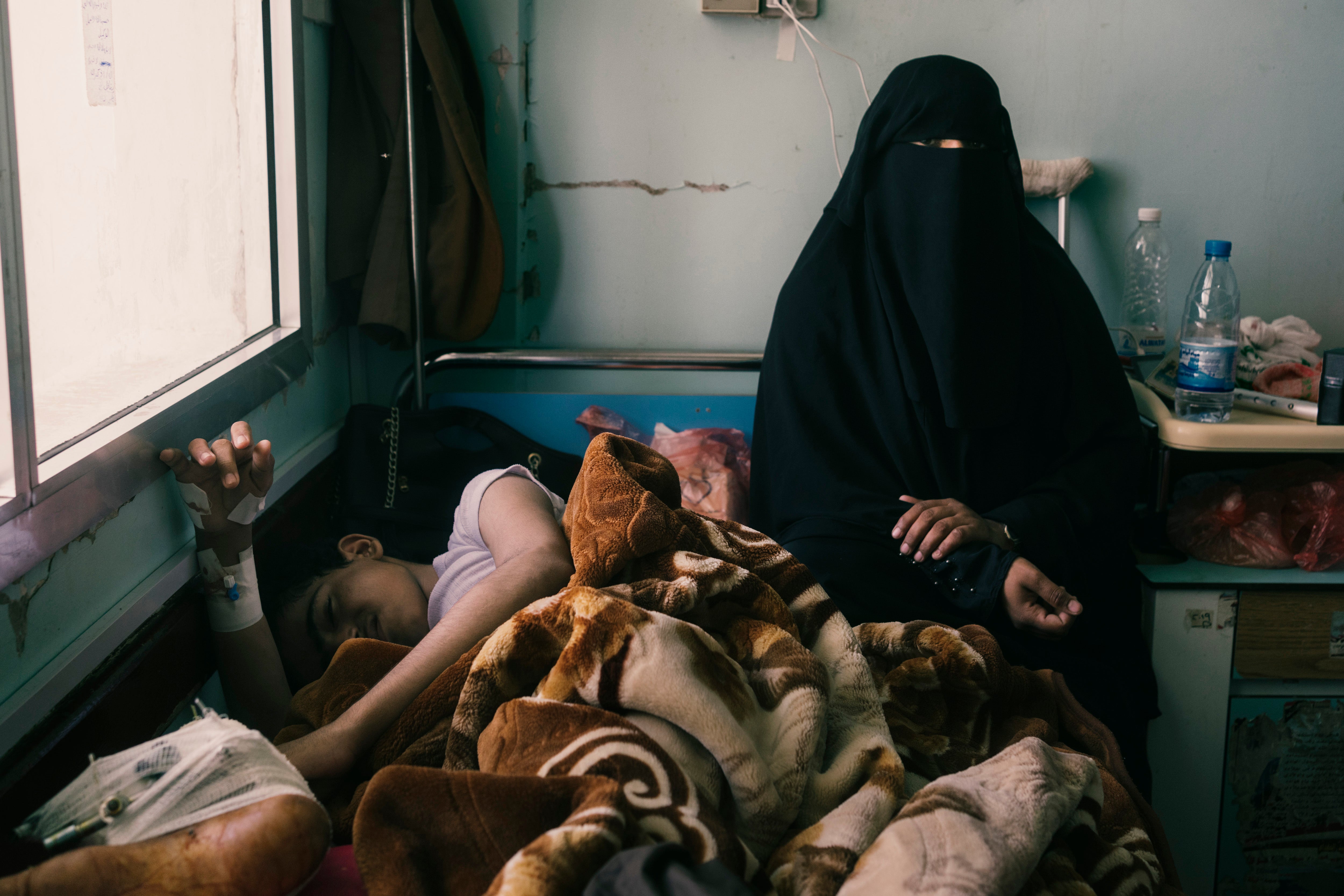
Upstairs, Haroon Abdullah, 20, is resting, propping up his burned and broken leg as he recovers from what he describes as a drone attack on his position outside of Marib in early August. “At around noon, we heard the sound of the drone buzzing, then it just exploded,” he recalls.
The drones are “continuous,” he says, “dropping four to five bombs each day.”
His latest injury marks the fourth time he has been badly wounded in the war. Behind him, photos of troops killed on the front line peel off the chipped wall. All around him lay other young men recently wounded on the battlefield. “This war has made us grow old,” Abdullah says.
Even children have been aged by battle. In the intensive care ward, a boy who says he is 15 years old recounts how he had been shot while fighting for the Houthis about 11 months ago. The gunshot caused a spinal injury that has left him paralysed.
Al-Shami, the minister, denies that any children are fighting for the Houthis and says any such claims are “not true”.
The battle for this strategic province is hampering renewed efforts to put an end to the war, analysts say, and talks are largely stalled.
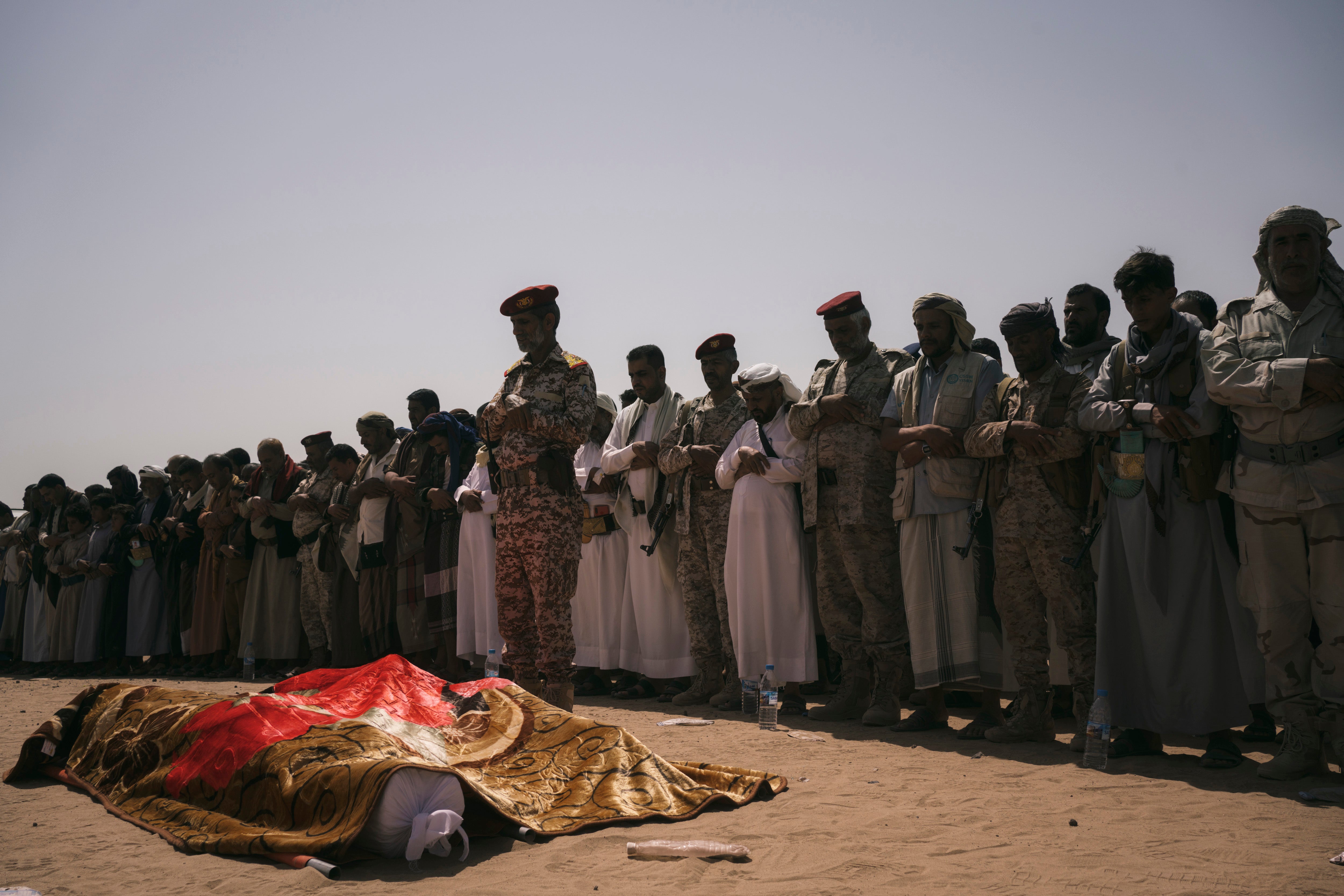
“What we see is full-on determination by the Houthis to take Marib,” says Timothy Lenderking, US special envoy for Yemen. And the battle for the province, he says, is “the stumbling block” in negotiations.
Early this year, the Biden administration, eager to distance itself from the widely criticised conflict, withdrew its support for the Saudi-led coalition’s offensive operations and reversed a Trump administration decision labelling the Houthis a terrorist group. That designation threatened to interfere with international aid efforts, relief groups say.
The withdrawal of US support “affected our morale as leaders”, says bin Aziz, the army chief of staff. “We want our American friends to reconsider this decision.”
After Saudi aircraft roar overhead, he describes the sound of their airstrikes as “the best symphony”. Government forces have held the Houthis back largely through that support, analysts say, although the rebels have recently made some notable advances.
“You can’t really win a war with air power,” says Elana DeLozier, a senior fellow at the Washington Institute for Near East Policy. “And this is where the government really gets itself into trouble because it doesn’t have enough oomph to push out the Houthis, so it’s just the Saudi airstrikes [holding them back].”
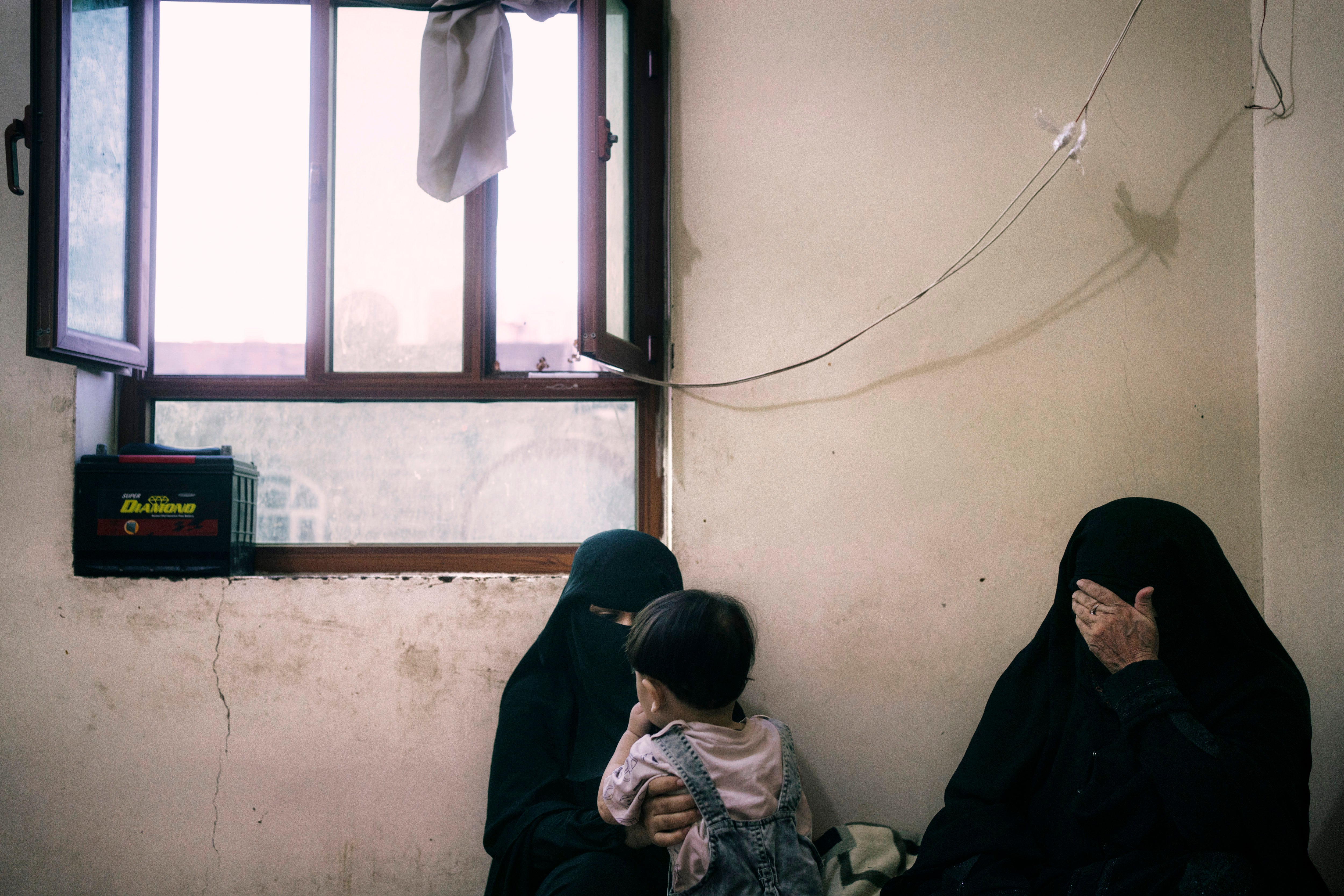
A sense of dread is closing in on those Yemenis who fled fighting elsewhere for what they believed would be the safe haven of Marib.
Jamila Saleh Ali Duma’s family abandoned their home in Amran province several years ago and she now lives in a cramped apartment in Marib. In June, a missile struck a gas station where Duma’s husband, Taher, was in line, burning alive him and their two-year-old daughter, Layan, she says.
Al-Shami, the Houthi minister, says that the strike targeted a “military site” and that their forces “would never intentionally kill a child”.
Now, Duma, 27, is afraid to allow her son outside. “I have no one but him,” she says. “There’s no way I’m going to let him go out.”
Fatima Mohammed al-Sharafi’s family fled for the fourth time this spring, seeking refuge in a camp on the outskirts of the city. Soon after, strong winds ripped through the area, blowing over their tent on top of her infant daughter, killing her.
When asked her daughter’s name, she pauses for around 10 seconds, stunned at her own inability to recall.
Then it comes to her.
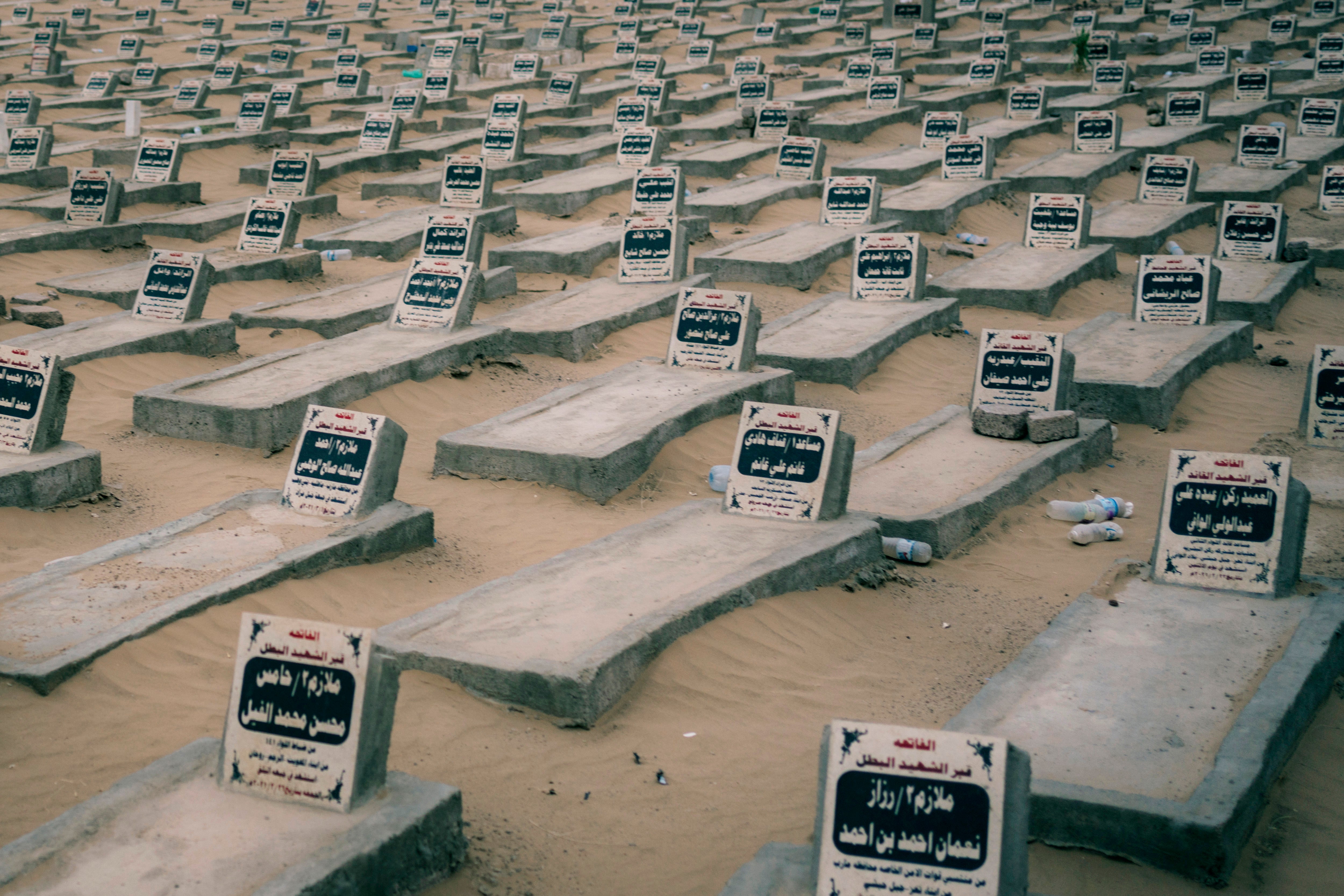
“Amal,” she cries out. The only way she has been able to cope with the loss has been “by trying to forget her”.
Ibrahim al-Qamhi and Abdo al-Kahli did not know each other in life but on a recent morning, as a crowd of men and boys gathered outside the mortuary at the hospital, the bodies of the two soldiers, shrouded in white cloths, were loaded into an ambulance side by side.
Al-Qamhi was killed in a strike by a missile or drone, fellow fighters say. Al-Kahli was killed by a planted explosive, his relatives say.
Their young and serious faces were the latest to adorn memorial fliers that were distributed before their funerals hailing them as martyrs for a great cause.
As they are buried, their friends, back from the battlefield for the ceremonies, bemoan the conditions on the ground. “Drones are what’s causing us problems on the front line,” says Bilal Abdullah, 38, adding that they also need anti-missile defences. But the troops are prepared to continue defending Marib from Houthi advances, Abdullah says, even if it means to “sacrifice ourselves”.
Nearby, al-Qamhi’s father kneels by his son’s freshly buried body, gently packing the sand around a photo propped against his headstone.
Then he stands up and slowly walks away, hanging his head as he passes rows of other new graves shimmering faintly in the late-morning light.
© The Washington Post
Join our commenting forum
Join thought-provoking conversations, follow other Independent readers and see their replies
Comments



Bookmark popover
Removed from bookmarks